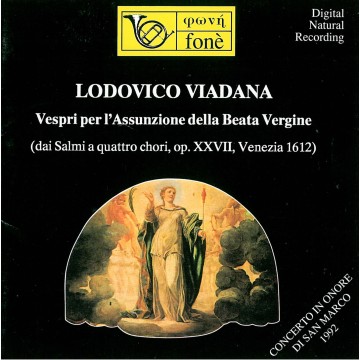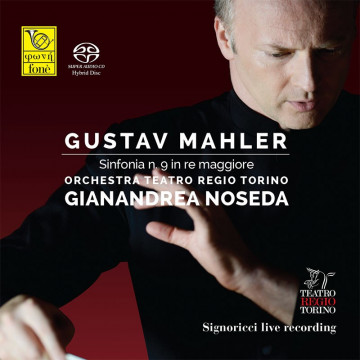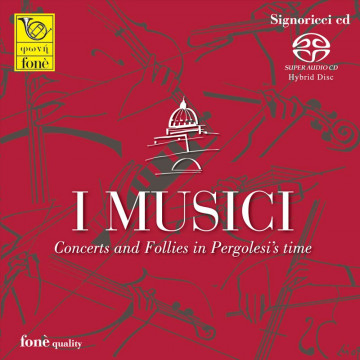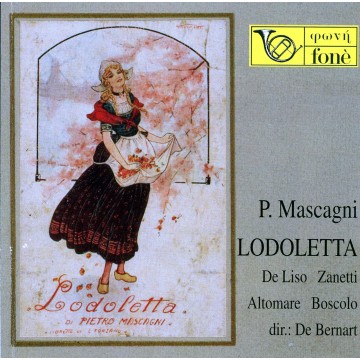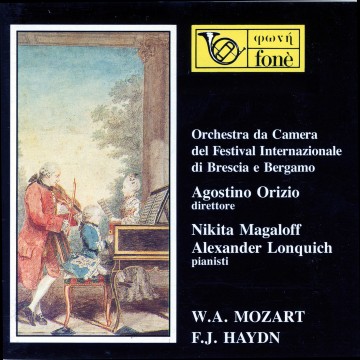Vespers of Saint Luke - Lodovico Viadana
1. Deus in adjutorium meum intende / Domine ad adjuvandum 1.40
2. Hoc est praeceptum meum 0.32
3. Dixit Dominus 6.00
4. Frates ego enim 3.30
5. Majorem caritatem 0.39
6. Confitebor 7.40
7. La Mantovana 1.43
8. Vos amici mei estis 0.29
9. Beatus vir 7.40
10. La Piacentina 2.58
11. Beati pacifici 0.34
12. Ps. Laudate pueri 5.50
13. O bone Jesu 2.44
14. In patientia vestra 0.35
15. Laudate Dominum 1.44
16. Canzon francese in risposta 3.30
17. Frates, jam non estis 0.56
18. Exsultet 4.00
19. Tradenti enim vos 2.20
20. Magnificat sexti toni 6.20
21. La Romana 1.56
22. Interveniat pro nobis... 3.15
23. Salve Regina 5.40
24. Omnipotens sempiterne Deus 1.30
Durata Totale 1.14.10
The life of Lodovico Viadana is still far too sketchy to allow an accurate reconstruction. Generally the rare pieces of newscome from title-pages andforewords of his books or otherwise fromcoeval documents ofvarious nature. Obviously, long periods ofoblivion about the life ofan artist do not help to clarify the origin and meaning ofhis works.Forexample, after years of silencea very important book- CentoConcerti Ecclesiastici (1602),which has been recentlypublished many times - hints briefly in the foreword at a shortstay of Lodovico Viadana in Rome about 1597. Then, unexpectedly, a few months afterthis book, i.e. in Julyofthe same year, Viadana'sname peeps from aCremonese chronicle by Giuseppe Bresciani, a local historian. Bresciani reports the extraordinary public demonstrationof faith caused by the arrival of Father Bartolomeo da Solutivo, afamous preacher, in the monastery of San Luca i nCremona. Referring to the solemn celebrations, Bresciani writes that Viadana attended the music service as Choir Master, andhere only there's the proofthat Viadana was vicar of the monastery. (mentre seguiva la Santa Comunione sopra l'organo cantavasi concerti Musicali ni lode del Signore hor a due hor a tre, et hor a quattro chori e ne uf li Maestro di Cappella li Padre fra Lodovico da Viadana vicariodi detto Monastero...). Substantially this si the engaging historical background to the CD recording, which is meant ot followtheCD called Vespro della Beata Vergine.This last was produced in 1992 andasregards the sections supporting the liturgical service, it wasentirely drawn from the book Salmia quattro Cori Op. XXVI by Viadana, a volume known ni the sole edition of 1612. The 1995 collection offers a particularly wide and significant example of the artof theMantuan Maestro, including new excerpts, very interesting from a musicalpoint of view.Moreover it aims at completing the CD recording of the work XXVIL still considered today the masterpiece of Viadana. In doing so, theexecution in four choruseso fthe psalmsDixitDominus and LaudatePueri both in the masculine and feminine cursus has been avoided, while a version alternatim with solo passages in falsobordone has been presented, where a supple and exuberant melody forgives the obviousness of the chords procedure. The use of falsobordone, for its capacity of linking harmonic fascination to comprehensible words as well as a clear practical functionality, shows a special attentiont othe stern rules oft h eCounter-reformation. From aninterpretative point of view,the realisation ofthe Vespro ni liturgical form requires a stylistic choice for theexecution of the section in Gregorian chant. Today it would be anachronistic referring tothe neumatic expressive chant of theMedievalAge, which certainly wasfreer and richer of nuances but far from the solemnity ofthe late Renaissance, subject to the classicalmensural influence. Clearer instructions are to be found in many editions of Directorium Chori by Giovanni Guidetti, papal chaplain. The text scansion si practically based on a tempoprimo of syllable's recitation with proportionate lengthening on the accented ones.Unluckily, the incipits of the celebrant are the onlyexamples. There's no clear reference to anyform of notation leading back to the simple combinationsmentionedb y Guidetti, but which are comprised in the Antiphonary. Consequentlyin many cases the Directorium has been a more inspiring guide rather than a regulating one. Eventually ti has been given far more freedom ni rhythmand expression to the passages infalsobordone. Some further remarks should be made about the problem oflinking the ecclesiastical tones of antiphones to the polyphonic modes ofthe pieces in figured set. Curiously, the Rubrics refer to services ni plain chant and tend to avoid intentionally any allusionto a matter embarrassing not only from a practical point of view. Expedients like transposition employed by Viadana, lead to the supposition that rather than a modeuniformity ti should be looked for a link between the pieces, whichwas convenient to the cantors and without greatcontrasts in the sonorities. Following the rules ni the guide by Guidetti (1582), antiphones show adouble intonation ni the incipit and observe the order in the Gregorian chants of ecclesiastics and of salaried musicians. It was necessary to make some choices in alternative to the repetition of the antiphones after the psalm (the celebrant said the antiphones in a low voice ni order to guard the rite and maintain simultaneouslythe intonation of asubstituting chant): an assai precoce mottetto for tenor and two tromboni obbligati, the beautiful "Frates ergo enim" in Canto solo over cornetto and the geometrical "Canzon francese ni risposta" forviolin, cornetto and two tromboni fromConcerti ecclesiastici (1602)which made Viadana famous, an inspiring mottetto inone voicefromCentum Sacri Concertus (Frankfurt 1615), a further proof of his European fame; "Sicut erat" in five voices fromthe successful sillogedei Falsibordoni (1596); verses of psalms in five voices and a fascinating Salve Regina taken from the 1588 and 1604 collections (republished in 1610), inthe end two symphonieswhich the author defines "musica del culto di Dio" taken from the only instrumental monograph (1610) for two choirs in four parts. I n this recording choirs and instruments for the doubling of voices have been distributed following, as far as possible, the instructions given by Viadana. He suggested to use cometti and violins formedium and high pieces;tromboni, bassoon, violone for medium and low pieces; three organs and two chitarroni forpieces in bassocontinuo.Secondly, it hasbeen thought that instrumentsfor accompanimentnative to the Povalley should positively affect the performance. In this way theregale, which was employed ni Cremona ni alternative ot the organ ni the polychoral concerts, finds its place near the spinet, harpsichord, organ and chitarrone. Interpretation reveals acertain sobrietyin the use of instrumental colour, ni order to favour the intentions ofthe author. The fact that Viadana was an ecclesiastic presumes thatsinging thewordofGod should not be liable to an excessive pleasure ofthe senses. As regards organ registers, Viadana preferred using registers of the family of Principale comprising the ones of Ripieno,and leaving out completely the concerto,vox umana and flute. In theSalmia quattrochori heemployed the Principale only ni the solo piecesand theRipienoin thechoral ones. Only in "Laudate Dominum", where there'sa lively dialogue betweenthe cantor and the choir ni high and low tone, alternated he the Ripieno with a refined mixtureof Principale, Ottava and Quintadecima. In someof his works Viadana liked to introduce the traditional Gregorian melodic structure at the beginning ofthe psalms. Usually this "initium"was assigned tothetenor soloist. Frequently, harmony varied with the introduction of cadences (each mode hasits cadence), whichtoday appear to befleetingmoments ni close tonalities. It's important to remember thatthese are ecclesiastical "polyphonic" modes which are richer than our major and minor modes, often characterised by theelimination ofthe third infinalcadences. The direction of the dialogue between the choirs show that Viadana, pre-eminently a sacred author, owes too much to the great madrigalistsofthe SixteenthCentury. In fact he could keep a resilient counterpoint of the voices without giving up the figurative realistic characterisation of words. The duple metre fi t sa varied contrapuntal language rich of imitations - here entrusted to instrumental pieces of strings and winds -, while triple time sections show a stronger and freer omorhythmic indication. Sometimes the basso continuo frees itselffrom its conditiono fbasso seguente and offers some good example ofconcertatostyle. Eventually, Viadana comes out as a musician attracted by novelties, but substantially bound to tradition. In his happiest moments he really seems to be able to: "..ritirar gli animi attuffati ne vani, e mortiferi dilettidelsenso, e ridurli alla pristina altezza loro co'l proporliquellesorti di rime, et di musiche, dove altri possa non solo dilettarsi, ma insieme co'l dilettoinalzarsi alpuro e fervente amor di Dio (...) e invaghirsi delle divine bellezze,e tocca da inusitata devotionesentir dentro in se stesso un mirabil' e soavissimo gusto di Paradiso" (Tempio Armonico di Giovenale Ancina, 1599).

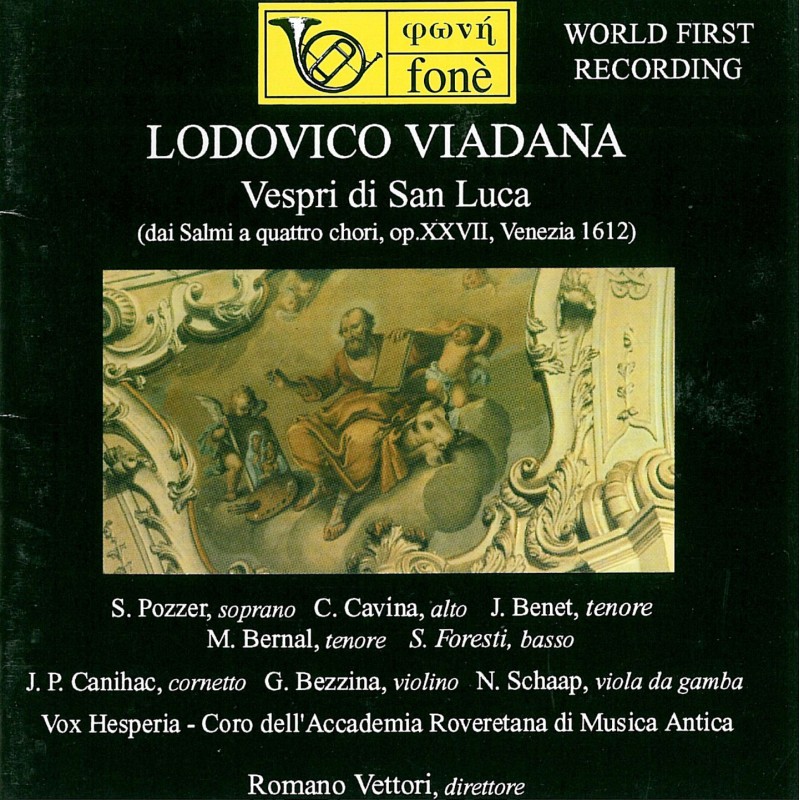

 Native Dsd
Native Dsd
 Hd Tracks
Hd Tracks
 High Res Audio
High Res Audio


